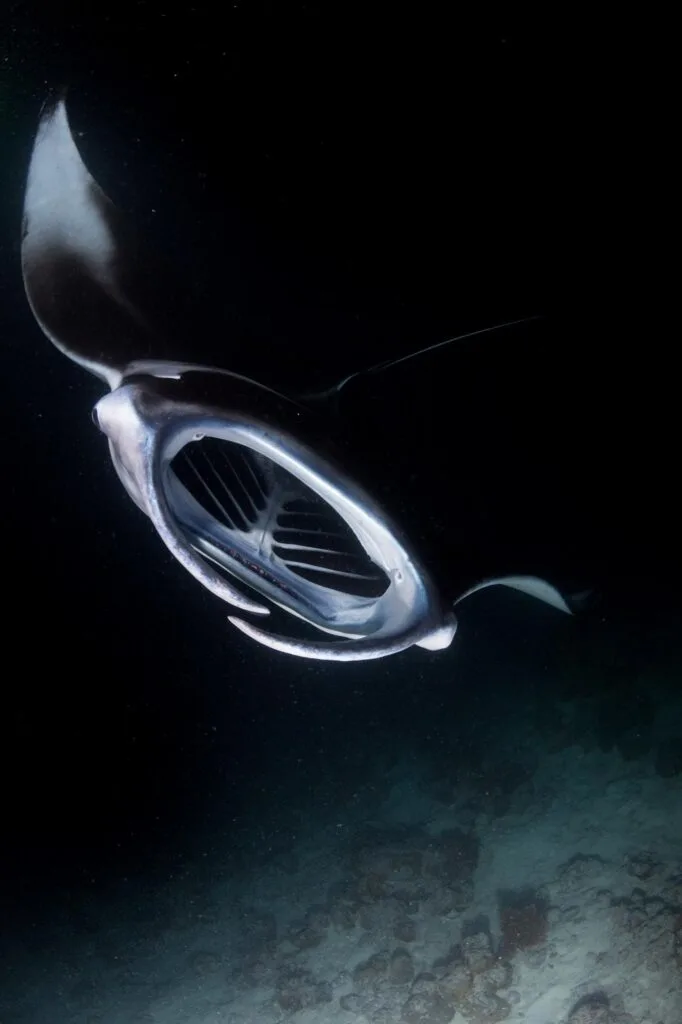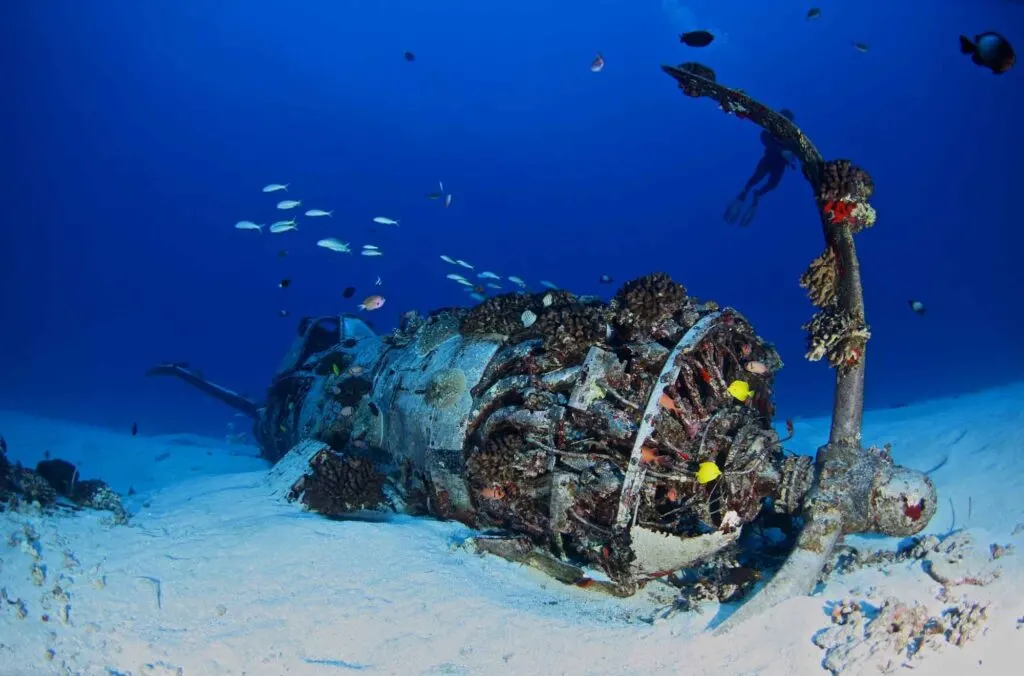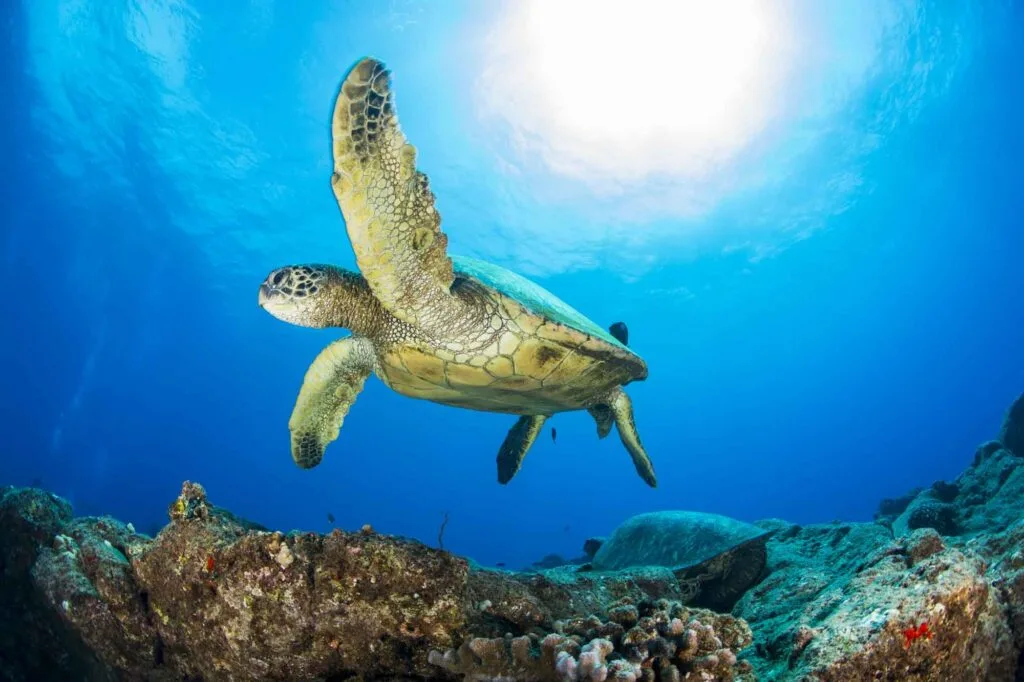- 29 Oregon Facts: Fun Facts About Oregon You Should Know - November 3, 2023
- 13 Best West Coast Road Trips in the United States - August 18, 2023
- 21 Best US West Coast Beaches Worth Visiting - February 20, 2023
It’s no surprise that scuba diving in Hawaii would be a part of every US bucket list.
Hawaii is home to some of the most stunning natural scenery in the United States. The volcanic islands are a gorgeous playground for nature-lovers both above and below water.
As one of the easiest accessed and closest pacific islands that just so happens to be part of our country, Hawaii makes the perfect tropical getaway for Americans.
Scuba divers will be thrilled to hear that Hawaii offers world-class dive sites on every one of its islands.
You could spend years island hopping, and you would still be able to find new dive sites to explore that you hadn’t seen before.
With fantastic week-long diving trips eager to take you underwater and show you the magical waters of Hawaii, scuba diving is bound to be the most exciting part of your Hawaiian getaway.

Hawaii Dive Tips
Choose Your Dive Boat Wisely
You might be surprised to find out that some of the fantastic dive sites can be accessed right off the beach.
That means all you would need to do is rent some equipment and save yourself quite a bit of money by diving on your own.
That being said, of course, there will be some epic and jaw-dropping dive sites that you need a good boat to reach.
Hawaii has limited liveaboard options with one major liveaboard, the Kona Agressor II. It has stellar reviews, an astonishing number of dives, and many features that get your money’s worth.
Click here to check departure dates and availability

Take It Easy
We know you might be wanting to indulge in some adult beverages while you’re on vacation in Hawaii. They are well known for their luaus and, of course, the Mai Tai.
It’s important to remember that you, dear scuba diver, should be in good physical and mental shape when you go diving. Avoid drinking heavily the day before your dive because hangovers can be a safety risk.
Also, be sure to plan your dives for earlier in your trip. You shouldn’t fly within 24 hours of your last dive.
Best Time to Go Scuba Diving in Hawaii

Hawaii is blessed with sunny, warm waters and weather year-round. No matter what time of the year you visit, you’ll be able to enjoy scuba diving in Hawaii.
- December-April: It is considered the rainy and peak season in Hawaii, however, the southwest sides of the islands tend to get very little rain, so you can still enjoy your vacation even if you visit then. In the winter, you may be able to hear the humpback whales communicating underwater.
- April-June and September-November: If you prefer to try and avoid the busiest time of the year, you can visit from April to June. This time period offers less rain and warm temperatures without the massive crowds that flock to Hawaii in the summer.
- July-August: The sea is at its calmest, which means you’ll be able to enjoy excellent visibility at this time.
Scuba Diving Conditions in Hawaii

As mentioned previously, the best visibility is in July and August. But what about temperatures, currents, and sea life?
When scuba diving in Hawaii, the conditions depend on the time of year, which island you’re on, which side of the island, and even down to the time of day. Still, here are some average diving conditions:
- Water Temperature: between 72oF and 83oF
- Visibility: between 60 and 100 feet, but may differ due to rainfall
- Current: low to high, depending on location (be aware of rip and tidal currents)
- Wetsuit Needed: 3-5 mm
- Diving Difficulty: Dive sites for divers of all levels
Best Scuba Diving Sites in Hawaii
Here are the top dive sites in the Hawaiian Islands in order of favorites!
Diving in Big Island – Best Diving Location in Hawaii

The Big Island has a nearly unlimited amount of dive sites for you to choose from. The most notable spots are either on the Kona side or the Hilo side of the island.
The Kona side is known for ideal conditions, with visibility reaching farther than 100 feet at times.
With lava flows in the background, divers suit up for a week of spectacular diving. Boats like the Kona Agressor II take you on a week-long diving trip along the Kona coast.
Besides, the fascinating underwater topography provides a backdrop to a myriad of marine life. Here you can spot dolphins, turtles, and eels, and humpback whales from November through February.
Still, one of the most memorable dives in Hawaii is the Manta ray night dive. Typically, the professional divers from Kona Agressor II will include an afternoon and night diving to see the highly sought-after Manta rays.
You can watch these giant, majestic creatures do acrobats as they filter feed for plankton in one of the few Manta dives at a feeding station (rather than a cleaning station). These mantas measure up to 18 feet at the wing!
The Manta night dive will be something you remember forever. Heck, this whole scuba diving experience is something you will remember forever!
Click here to check departure dates and availability
Diving in Oahu

Another epic spot for diving, Oahu is home to sharks, green sea turtles, an abundance of colorful fish, calm waters, and quite a few popular wreck dives. You’ll have your choice of adventures depending on what you’re into!
Some of the most famous wreck dives in Oahu are the San Pedro YO-257, an old navy oiler sunk in 1989.
Their goal was to create an artificial reef, which seems to have worked because now it is home to many fish life, white tip reef sharks, green sea turtles, octopuses, and nudibranchs.
Another wreck, the Sea Tiger, sits a bit deeper at 80-120 feet. It attracts similar sea life to the YO-257, but also eagle rays. It was also purposely sunk in the late 90s to create an artificial coral reef.
There are quite a few other wrecks in the waters off Oahu, including the Vought F4U Corsair, a fighter plane that went down in 1945.
You can check out the aircraft at 115 feet, and while you’re down there, look for garden eels and Galapagos sharks.
Diving in Maui

Maui also offers an abundance of world-class diving in Hawaii right off the shore.
It has incredible visibility and a wide variety of sea life that you may encounter on your dives, from whale sharks to dolphins to mantas.
If you’re itching to see hammerhead sharks, there is a channel called Hammer Time which occasionally sees vast schools of the unique shark.
There’s also a chance to catch gray sharks, Galapagos sharks, and record-breaking barracuda.
You can also take day trips from Maui to other popular dive locations on other nearby islands, including the Lanai Cathedrals, stunning caverns created by lava tubes, Black Rock, underwater lava formations, and the Molokini Backwall, a manta and shark cleaning station inside an impressive and deep crater.
Diving in Kauai

Try a drift dive and hit three dive sites in one go with Turtle Bluffs, Fish Bowl, and General Store.
The current will carry you along all three spots with a showing of tropical fish, caves, and occasionally sharks or turtles as well.
Another option is to take a boat trip over to the forbidden island, Niihau, which is a privately owned and protected habitat for the monk seal.
Here, you can dive at Vertical Awareness and see giant pelagic fish, mind-bending drop-offs, and the adorable monk seals.
Unfortunately, they are endangered, and it’s estimated there are less than 1,500 remaining.
Diving in Molokai

This island is known for its never-ending, 30-mile long coral reef that seems to be nearly untouched.
The variety of coral is unrivaled with species including Blue Rice coral, Antler coral, Cauliflower coral, and Finger coral, just to name a few.
Thanks to the lots of coral, there is also an abundance of marine life.
More monk seals, dolphins, hammerhead sharks, eagle rays, manta rays, and sea turtles all call Molokai home, making it home to some of the best scuba diving in Hawaii.
The tiny island has over 40 dive sites to choose from, with favorites like Fish Bowl and Fish Rain.
Another famous dive is a drift dive where divers can experience schools of scalloped hammerhead sharks.
Diving in Lanai

Lanai in West Maui is home to rock formations and rare coral that will have your jaw-dropping.
If you’re into swim-throughs and light shows, then this is the right dive spot in Hawaii for you.
The underwater playground was formed over thousands of years by tectonic shifts and hot lava.
One popular dive site on Lanai is the Cathedrals. Here you can go cavern diving, swim through shoots, caves, and arches formed by lava.
Steve’s Cave and Lighthouse Point are other popular dive sites in Lanai. You can scuba dive near Lanai with day trips from Maui as well.
On the boat trip over, you may see humpback whales or spinner dolphins, making your scuba diving trip that much more memorable.
Diving in Molokini Crater

We briefly touched on the Molokini Back Wall, but it deserves a closer look. The partially sunken volcanic cone offers some of the most insane visibility when diving in Hawaii.
It is part of the Marine Life Conservation District and a safe home to more than 260 marine animals.
The cliff drops to over 300 feet deep in the open ocean, inviting massive pelagic species, giant schools of fish, and even dolphins, shark species, and rays.
Because of the technical difficulty of this dive between the drop-off and the potential currents, it is for advanced and experienced divers.
The back wall is done as drift diving, so make sure you’re very comfortable with controlling your buoyancy.
How to Get to Hawaii
You’re probably flying into Hawaii, so if you can, choose to fly into Kona International Airport (KOA).
KOA is only a 20-minute drive from the main port of departure in Big Island, Kailua Pier.
But, if you’re flying in from a country other than the continental US, it is possible to fly into Honolulu’s Daniel K. Inouye International Airport (HNL). Flights from Honolulu to Kona are a short 30-minute ride.
However, Kahului Airport (OGG) on Maui and Lihue Airport (LIH) on Kauai also receive international flights.
Map of Diving Locations in Hawaii
Here’s a free map with all the diving locations mentioned in this article.

Hawaii is a Diver’s Paradise
Whether you’re looking for a nice and easy shore dive to see some tiger sharks, gray reef sharks, or you want to push the envelope and get your adrenaline pumping with schools of sharks or vertical drop-offs, Hawaii scuba diving has something for everyone.
With excellent conditions year-round, there should be nothing stopping you from booking that once-in-a-lifetime trip to Hawaii!
As mentioned, we recommend liveaboards because they have everything (really everything) you could ever want for an epic diving vacation.
It’s an all-inclusive expedition that grants you access to comfortable cabins, delicious meals, professional staff, and many magical diving opportunities.
Click here to check departure dates and availability
That’s it for today. Enjoy your Hawaiian diving vacation!
Did you enjoy reading about these incredible Hawaii diving locations? Then share it with a friend who might enjoy it too!
